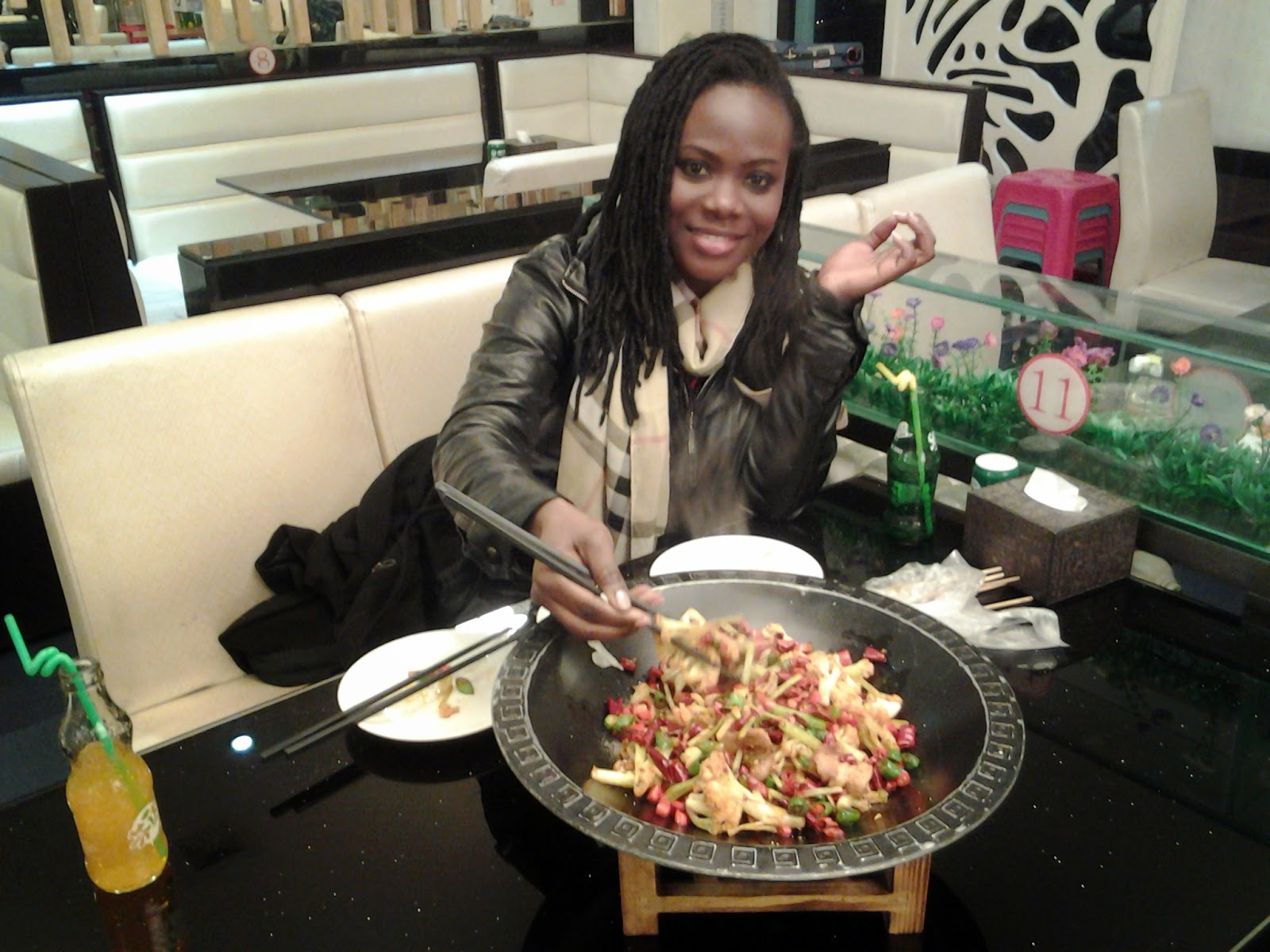I am simply excited to take you on this journey into
my experiences, thoughts and discoveries as an African lady in China. And what
better way to let you in on my AfriqAsia experience than to start with a sneak-
peak into the all-inclusive topic of HABITS. In fact, who on earth does not “own”
one? HABITS – a manner of life, a way of existence, a must-do must-have bit of lifestyle
that is kind of hard to let go… and really when you travel from one spot of this
earth to another, the first thing you pack along as your baggage is neither your
clothes nor your documents, it is your HABIT. That is the first luxury every traveler
unconsciously holds on to in a new place.
But for me as an African Lady in China, some of my
habits did not thrive long on the life jacket of luxury. I just watched in
dismay as they slid down the HIGHWAY of repentance: Initial Shock, adjustment
and then, a gentle ffffffff… fizzle out!!! And though the popular saying goes "Habits
die hard", some of mine died really FAST when I moved from Ghana to China. Here they GO! First,
(1) Sup
RICE! (Eat Your Rice In Silence)
That is one of the first BIG lessons I learnt in
China, right from the beginning. And someone may ask, what is wrong with that,
considering the fact that Rice is a staple in Ghana as it is in China
[especially in the South of China]. Well, there is something missing here if
you are a bit like me. When it came to rice, I always thought it had to “tango”
with STEW. In Ghana, for instance, you often hear RICE and STEW. They are sought
of an inseparable couple, and though there are other terms like sauce or gravy
or even “shitor” which is more suited for our “Waakye”, the truth is I always liked
my rice with some kind of sweet spicy aroma filled sauce which came in
incredible variety in Ghana: Kontomire STEW, Garden Egg STEW, Tomato SAUCE, and
what have you.
So imagine my shock when I walk into the University Canteen
in Beijing for Supper the first time and then realize that a majority of my
Chinese colleagues are simply relishing say, a bowl of white rice with…cauliflower
and grilled green beans! No wait! What’s going on here? I remember walking back
and forth, peaking to see if there would be anything, just anything that looked
like STEW! None! So I boldly walked to one of the lady Caterers and whispered
in Chinese, “You meiyou jiang” (有没有酱) meaning is there any sauce or STEW?” She glanced
around for a minute, as I waited, clutching pitifully at my dejected plate of
white rice. Finally, she looked back at me with a look that read “there isn’t
really that much of STEW around here”.
What a first meal experience! But oh yes! That is a key lesson in life: Life is sometimes going to be a bargain and a compromise on your little luxuries because you won’t always get it the way YOU want it. So I quickly grasped the reality of eating my rice in China and since then I have created my own “Code” to eating my rice the China WAY. On a nice weekend I could go for a bowl of rice with spiced cauliflower and beef and though I no longer have my STEW or SHITOR I still manage to joyfully EAT MY RICE IN SILENCE…
What a first meal experience! But oh yes! That is a key lesson in life: Life is sometimes going to be a bargain and a compromise on your little luxuries because you won’t always get it the way YOU want it. So I quickly grasped the reality of eating my rice in China and since then I have created my own “Code” to eating my rice the China WAY. On a nice weekend I could go for a bowl of rice with spiced cauliflower and beef and though I no longer have my STEW or SHITOR I still manage to joyfully EAT MY RICE IN SILENCE…
Written By Alice Blighton.
AfriqAsia Merge,
Still…
Bridging The Gap!




.jpg)




.jpg)





